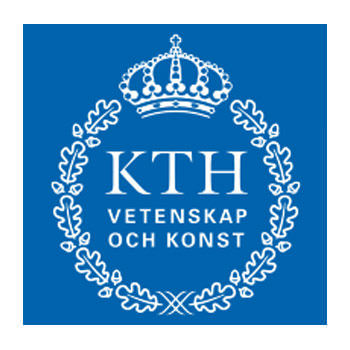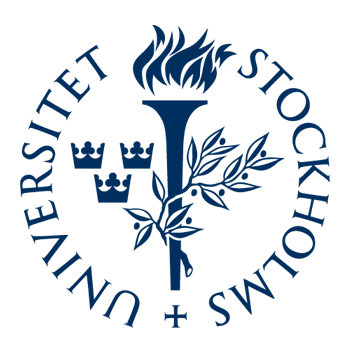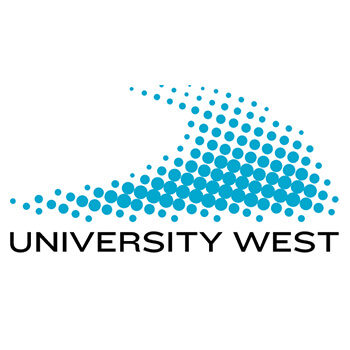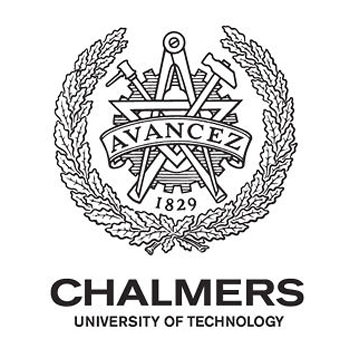KTH, Royal Institute of Technology

Founded: 1827
Address: Valhallavagen 79 Stockholm - Stockholm, Sweden
Phone: +46 8 7906000
Address: Valhallavagen 79 Stockholm - Stockholm, Sweden
Phone: +46 8 7906000
Here you find out KTH, Royal Institute of Technology complete information about fees, location, degree KTH, Royal Institute of Technology offers, number, website, and much more. KTH, Royal Institute of Technology is a leading university in Stockholm - Sweden.
You can also find out jobs at KTH, Royal Institute of Technology for students, teachers, and professors. We also update the database for an internship at KTH, Royal Institute of Technology for students.
Since its founding in 1827, KTH Royal Institute of Technology in Stockholm has grown to become one of Europe’s leading technical and engineering universities, as well as a key centre of intellectual talent and innovation. We are Sweden’s largest technical research and learning institution and home to students, researchers and faculty from around the world dedicated to advancing knowledge....p>
KTH is working with industry and society in the pursuit of sustainable solutions to some of humanity’s greatest challenges: climate change, future energy supply, urbanisation and quality of life for the rapidly-growing elderly population. We are addressing these with world leading, high-impact research and education in natural sciences and all branches of engineering, as well as in architecture, industrial management, urban planning, history and philosophy. Almost two-thirds of the SEK 4 billion turnover relates to research.
Basic and applied research are performed side-by-side at KTH and interdisciplinary research is conducted in parallel with work in specific fields. This approach encourages versatile solutions and the innovative climate creates many opportunities to realise great ideas. Our educational programmes foster a new generation of engineers, architects, teachers and undergraduate engineers.
KTH embraces academia and the public and private sectors working together. We are part of extensive international research collaborations and participate in a large number of educational exchange or joint programmes with universities and colleges in Europe, the U.S., Australia, Asia and Africa.
Sweden is considered to be one of the most technologically innovative countries in the world and Stockholm is consistently ranked as one of world’s most entrepreneurial, innovative and attractive cities. KTH maintains close relationships with an expanding network of international companies and the industrial community in a number of fields and working and studying here provides access to this network.
The four KTH campuses in Greater Stockholm, gather more than 12,000 full-time students, some 2,000 PhD students and approximately 3,700 full-time employees. The campuses are strategically located close to their areas of research and study, for example KTH Kista is situated in the middle of the Kista ICT hub, with some of the world’s leading Information and Communications Technology companies. One of our other campuses, KTH Flemingsberg, is located in one of Northern Europe’s leading medical technology centres for research and industrial activity.
KTH will continue to focus on research and education for a brighter, more sustainable tomorrow. We will continuously assess the impact of our efforts in society and contribute with the intellectual resources of our students and researchers to create new approaches to some of the most critical challenges of our times.
The origins of the Royal Institute of Technology in Stockholm – "Kungliga Tekniska Högskolan", KTH – go back to 1827, as the "Teknologiska Institutet" then began to offer education in technological subjects with a strong professional touch. Its education programme was meant to be "popular as well as practical", as the industrialization process of modern society was then getting under way; this called for a school that could meet the ever-increasing demand for engineers. Thus the educational focus of the new institute was set on applied technology, not on its scientific foundations.
Even then, this approach was an anything but uncontroversial one. When viewing the early history of KTH, this clash between industrial and academic perspectives was in fact seen as a constant element of concern, as the desire to give scientific authority to the subject of technology collided with society´s demand for a practical approach to engineering in all its aspects.
However, these two approaches were not incompatible, not even in the 19th century! Basic research and practical engineering did often cross-fertilize each other in those days also. An example of this was chemistry on an industrial scale; the scientific explanations of its processes were then arriving one by one. Another was electricity, originally a subject area of purely scientific interest, which was becoming something most useful in everyday life.
Thus the new school of technology was able to maintain good relations with the industrial establishment without having to renounce the academic aspect. One step on its way to academic status was that of introducing, in 1877, the name Kungliga Tekniska Högskolan (in Swedish "högskola" is synonymous with university). By and by, systematic research activities were undertaken, and the students at KTH were subjected to the requirement of completing a final degree paper. Formally, the final academic recognition of KTH as an establishment of higher learning arrived in 1927, when its right to confer the degree of Doctor of Technology was promulgated.
Ten years earlier, in 1917, KTH had moved into its own, specially erected buildings in the northern part of central Stockholm. This is still the core of KTH´s main campus, even if our activities today include a number of other campuses all over the Stockholm provincial area. The housing areas of these are now comprising some 250,000 square metres in all.
KTH has always been in a state of growth. As the School of Mining was incorporated in KTH in 1867 the four established main branches of study became those of Mining Science, Mechanical Engineering, Chemical Technology & Engineering and Civil Engineering. Other subject areas have then been constantly added – Building Architecture in 1877, Electrical Engineering in 1901, Naval Architecture in 1912, Surveying and Engineering Physics in 1932, Computer Science in 1983, and Industrial Economics in 1990.
Just as the great variety of subject areas have undergone changes, so have the attitudes in society towards "the engineers". This has obviously had effect on KTH, too. In the early 1900s the word "progress" was on everyone´s lips, "technology" and "modernity" were prestigious words, and the engineering profession was one of high repute, synonymous with a safe path towards personal and social success.
Consequently a mass of students did compete for placements here at KTH – the place of action, where things occurred! In the early 1950s Sweden´s first nuclear reactor was installed in a cellar in our campus area, while on the other side of the street, higher up, Sweden´s very first TV station went on the air! In short, public confidence in the blessings of technology was of a high order.
However, a counter-reaction was in the making, as in the 1960s and ´70s the negative effects of industrial production were brought into the open. The public debate became one of nuclear power or not, of ruthless exploitation of nature and of the increasingly menacing development of the war industry. As a result of this darkened world outlook, interest in technological professions dwindled.
Even so, the battle for technology has been a winning one in the long run. Thanks to this very knowledge of their own negative effects, the fields of technological research and study have been favourably reshaped towards greater openness and a new sense of responsibility. This process has also been helped by the steady influx of new subject areas. With each one of these being added, and new technologies becoming part of Swedish everyday life, new crowds of KTH undergraduates have appeared. In the last ten-year period, such new subjects as biotechnology and IT have assumed strategic positions in modern social life as well as in KTH´s lecturing halls.
Here at KTH about 20,000 people today are active as students – of every description and background, and of both sexes. The traditional picture of the KTH undergraduate as being a male seems to be a die-hard one, however, today´s development towards greater equality, and a number of KTH efforts to that very effect, have paid off handsomely. A lot of things have changed materially since 1921, when admission to the regular programmes at KTH first became available to everyone, irrespective of their sex.
As we entered the new century, about one-third of the first-year students here at KTH were women. This is a good start, but the university executive wishes to push this issue still further. Its ultimate target is to widen people´s active interest in technology on the whole, so that all the different factors today distorting the choice of profession – sex, social background, ethnic background, etc. – are eliminated.
You can also find out jobs at KTH, Royal Institute of Technology for students, teachers, and professors. We also update the database for an internship at KTH, Royal Institute of Technology for students.
Since its founding in 1827, KTH Royal Institute of Technology in Stockholm has grown to become one of Europe’s leading technical and engineering universities, as well as a key centre of intellectual talent and innovation. We are Sweden’s largest technical research and learning institution and home to students, researchers and faculty from around the world dedicated to advancing knowledge....p>
KTH is working with industry and society in the pursuit of sustainable solutions to some of humanity’s greatest challenges: climate change, future energy supply, urbanisation and quality of life for the rapidly-growing elderly population. We are addressing these with world leading, high-impact research and education in natural sciences and all branches of engineering, as well as in architecture, industrial management, urban planning, history and philosophy. Almost two-thirds of the SEK 4 billion turnover relates to research.
Basic and applied research are performed side-by-side at KTH and interdisciplinary research is conducted in parallel with work in specific fields. This approach encourages versatile solutions and the innovative climate creates many opportunities to realise great ideas. Our educational programmes foster a new generation of engineers, architects, teachers and undergraduate engineers.
KTH embraces academia and the public and private sectors working together. We are part of extensive international research collaborations and participate in a large number of educational exchange or joint programmes with universities and colleges in Europe, the U.S., Australia, Asia and Africa.
Sweden is considered to be one of the most technologically innovative countries in the world and Stockholm is consistently ranked as one of world’s most entrepreneurial, innovative and attractive cities. KTH maintains close relationships with an expanding network of international companies and the industrial community in a number of fields and working and studying here provides access to this network.
The four KTH campuses in Greater Stockholm, gather more than 12,000 full-time students, some 2,000 PhD students and approximately 3,700 full-time employees. The campuses are strategically located close to their areas of research and study, for example KTH Kista is situated in the middle of the Kista ICT hub, with some of the world’s leading Information and Communications Technology companies. One of our other campuses, KTH Flemingsberg, is located in one of Northern Europe’s leading medical technology centres for research and industrial activity.
KTH will continue to focus on research and education for a brighter, more sustainable tomorrow. We will continuously assess the impact of our efforts in society and contribute with the intellectual resources of our students and researchers to create new approaches to some of the most critical challenges of our times.
The origins of the Royal Institute of Technology in Stockholm – "Kungliga Tekniska Högskolan", KTH – go back to 1827, as the "Teknologiska Institutet" then began to offer education in technological subjects with a strong professional touch. Its education programme was meant to be "popular as well as practical", as the industrialization process of modern society was then getting under way; this called for a school that could meet the ever-increasing demand for engineers. Thus the educational focus of the new institute was set on applied technology, not on its scientific foundations.
Even then, this approach was an anything but uncontroversial one. When viewing the early history of KTH, this clash between industrial and academic perspectives was in fact seen as a constant element of concern, as the desire to give scientific authority to the subject of technology collided with society´s demand for a practical approach to engineering in all its aspects.
However, these two approaches were not incompatible, not even in the 19th century! Basic research and practical engineering did often cross-fertilize each other in those days also. An example of this was chemistry on an industrial scale; the scientific explanations of its processes were then arriving one by one. Another was electricity, originally a subject area of purely scientific interest, which was becoming something most useful in everyday life.
Thus the new school of technology was able to maintain good relations with the industrial establishment without having to renounce the academic aspect. One step on its way to academic status was that of introducing, in 1877, the name Kungliga Tekniska Högskolan (in Swedish "högskola" is synonymous with university). By and by, systematic research activities were undertaken, and the students at KTH were subjected to the requirement of completing a final degree paper. Formally, the final academic recognition of KTH as an establishment of higher learning arrived in 1927, when its right to confer the degree of Doctor of Technology was promulgated.
Ten years earlier, in 1917, KTH had moved into its own, specially erected buildings in the northern part of central Stockholm. This is still the core of KTH´s main campus, even if our activities today include a number of other campuses all over the Stockholm provincial area. The housing areas of these are now comprising some 250,000 square metres in all.
KTH has always been in a state of growth. As the School of Mining was incorporated in KTH in 1867 the four established main branches of study became those of Mining Science, Mechanical Engineering, Chemical Technology & Engineering and Civil Engineering. Other subject areas have then been constantly added – Building Architecture in 1877, Electrical Engineering in 1901, Naval Architecture in 1912, Surveying and Engineering Physics in 1932, Computer Science in 1983, and Industrial Economics in 1990.
Just as the great variety of subject areas have undergone changes, so have the attitudes in society towards "the engineers". This has obviously had effect on KTH, too. In the early 1900s the word "progress" was on everyone´s lips, "technology" and "modernity" were prestigious words, and the engineering profession was one of high repute, synonymous with a safe path towards personal and social success.
Consequently a mass of students did compete for placements here at KTH – the place of action, where things occurred! In the early 1950s Sweden´s first nuclear reactor was installed in a cellar in our campus area, while on the other side of the street, higher up, Sweden´s very first TV station went on the air! In short, public confidence in the blessings of technology was of a high order.
However, a counter-reaction was in the making, as in the 1960s and ´70s the negative effects of industrial production were brought into the open. The public debate became one of nuclear power or not, of ruthless exploitation of nature and of the increasingly menacing development of the war industry. As a result of this darkened world outlook, interest in technological professions dwindled.
Even so, the battle for technology has been a winning one in the long run. Thanks to this very knowledge of their own negative effects, the fields of technological research and study have been favourably reshaped towards greater openness and a new sense of responsibility. This process has also been helped by the steady influx of new subject areas. With each one of these being added, and new technologies becoming part of Swedish everyday life, new crowds of KTH undergraduates have appeared. In the last ten-year period, such new subjects as biotechnology and IT have assumed strategic positions in modern social life as well as in KTH´s lecturing halls.
Here at KTH about 20,000 people today are active as students – of every description and background, and of both sexes. The traditional picture of the KTH undergraduate as being a male seems to be a die-hard one, however, today´s development towards greater equality, and a number of KTH efforts to that very effect, have paid off handsomely. A lot of things have changed materially since 1921, when admission to the regular programmes at KTH first became available to everyone, irrespective of their sex.
As we entered the new century, about one-third of the first-year students here at KTH were women. This is a good start, but the university executive wishes to push this issue still further. Its ultimate target is to widen people´s active interest in technology on the whole, so that all the different factors today distorting the choice of profession – sex, social background, ethnic background, etc. – are eliminated.
Read More
Details:
LeaderShip: Presiden: Sigbritt Karlsson
Fees:
Time:
Phone Number: +46 8 7906000
City: Stockholm
Fees:
Time:
Phone Number: +46 8 7906000
City: Stockholm
Timing:
Country: Sweden
Staff: 3700
Website: http://www.kth.se
Country: Sweden
Staff: 3700
Website: http://www.kth.se
Subjects:
Jobs in KTH, Royal Institute of Technology
Currently, there is no job opening in KTH, Royal Institute of Technology as per our database.



















Leave a Reply